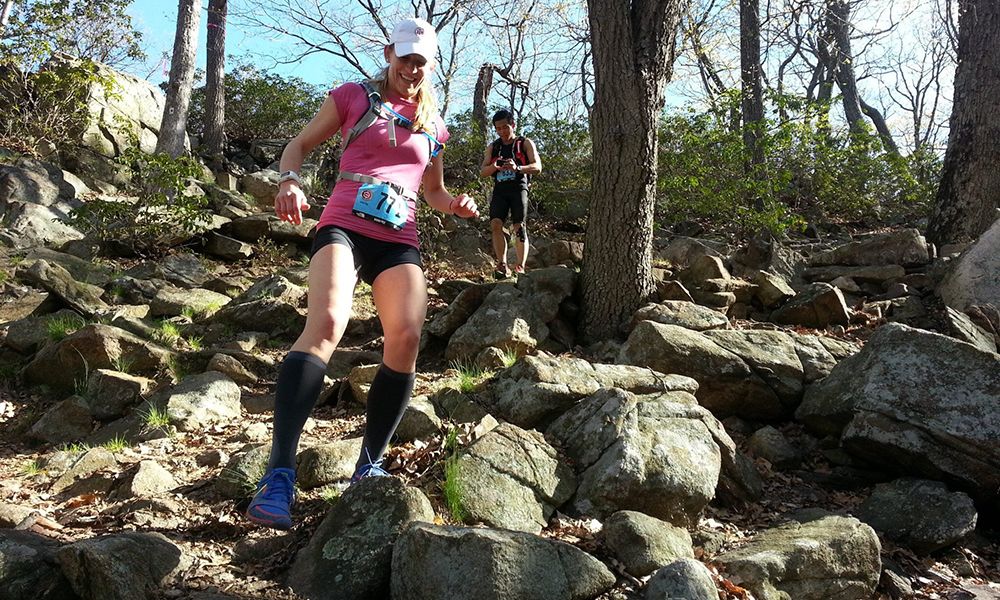Chances are, if you’re training for a race that race is going to contain at least one hill. And the only way to get better at something (running up that hill) is to do that thing, which is one reason to include hill training within your normal running routine. But even if you’re not training for a race and currently working on maintaining fitness, hill work has plenty of benefits to improve your speed and strength in general.
Yes, they’re tough and challenging, but it’s time to embrace them for their abundance of running benefits. Personally, I like to incorporate at least one hill interval in all of my sessions at Mile High Run Club, even if the session isn’t centered around hill repeats. After training for a handful of ultramarathons, I finally accepted the many advantages of hills. They make you strong, perfect your running form, and improve endurance, running economy, and speed. And they even protect your legs against soreness due to their low impact nature.
Below are some different types of hill work you can include in your own training or expect to see in your next Mile High Run Club class.
Short Hill Sprints
Repeat 8 - 10 shorter hill sprints (no longer than 1:00 minute) at a harder effort. If on a treadmill, alternate between your Low Level 3 and High Level 3 efforts; or, if you know your pace outside, between 10k and 5k race pace. The recovery will be an easy jog (2:00 minutes) back down.
These shorter bursts will work on your explosive power and also your running form. They are similar to strides on flat ground, forcing you to practice a slightly exaggerated running form - driving your knees, staying tall, a slight lean at the ankles, and driving those arms.
Long and Strong
Even gentle inclines require a slightly different technique and effort, so they are worth practicing in their own dedicated workout OR making sure to include a few within your next long run. Practice 5 - 6 repeats of 3:00 - 4:00 minutes on a hill with a lower incline. If you’re on a treadmill, we’re talking no more than 4% incline.Finally, the pace should be at a comfortably hard effort, no faster than your half marathon race pace, so you’re still able to hold a conversation, but it starts to get a little difficult near the end of each repeat.
These lower and longer climbs will work on your endurance and help develop that leg muscle strength.
Rolling Hills
Again, this hill workout can be performed on its own or within one of your recovery or long runs. It may be difficult to find the perfect stretch of rolling hills, so this is where utilizing a treadmill can tremendously aid in a custom tailored workout.
After a warmup, pick up your pace to your tempo pace (approximately 10-15 seconds per mile slower than your 10k pace, or roughly somewhere between your 10k and half marathon pace, or something that you feel like you can hold for 60 minutes). Then bring the incline up to 5% for 2:00 minutes and recover back at 1% for 3:00 minutes, repeating this sequence 4-5 times.
The trick here is to set the pace and NOT change it. This should force your heart rate up and make your breathing more difficult, closer to that breathless state. And just like that, you’re doing speed work! You’re using those unassuming rolling hills, simulating the effort of a speed workout without the outright speed.
Up and Over
Last, but not least, the “up and over” is my favorite type of hill work, which forces you to practice attacking the top of a hill then carrying that speed through on flat ground once cresting the top.
Run at your comfortably hard half marathon pace for 2:00 - 3:00 minutes uphill (anywhere between 4-7% incline), but pick up the pace to 10k race pace the last :30 seconds. Now you’re at the top, but you’re not stopping! Drop the incline back down to 1% and continue at that 10k race pace for 1:00 and then recover (repeat this sequence 4-5 times).

